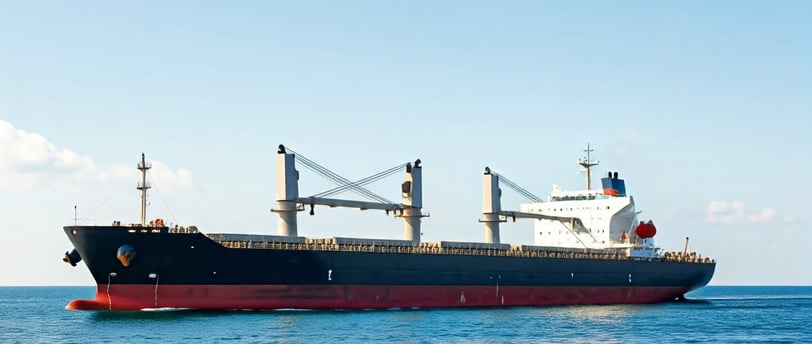The Dawn of the 21st Century Yaslav Trade System
A model of trade routes in Yaslav as the world enters a new millenium
HEREIK NEWSECONOMICS
Carl Mysken
1/6/20003 min read


Yaslav's geography—a mosaic of fragmented coastlines, sprawling forests, and interwoven rivers—has shaped its economic realities for centuries. Today, its trade routes are the arteries of prosperity, powering collaboration and competition among nations like Hereik, Ostrila, Leode, and their southern and eastern neighbors. However, as maritime dominance becomes increasingly contested, Yaslav faces critical challenges in securing its position within Vivere's global trade networks.
Hereik: The Maritime Heart of Yaslav
Hereik sits at the nexus of Vivere’s shipping networks, connecting the northern industrial powers of Nuskia, the agricultural south, and the open western oceans. Its ports, particularly in Helvetia and Litchisle, are the busiest in Yaslav. Over 40% of the continent’s seaborne trade flows through the straits near Hereik—referred to as the "Spine of Yaslav"—carrying raw materials from Nuskia, manufactured goods from Czexkia, and agricultural exports from Baltaris.
This dominance, however, is increasingly under pressure. Growing maritime nations like Lyrukia and Amonde are heavily investing in port modernization, seeking to attract shipping traffic and reduce reliance on Hereikian docks. Atlanis focuses on becoming a hub for high-value goods, and nations like Baltaris are carving out a niche as a primary agricultural export gateway. Moreover, Nuskia’s expansion of port facilities in Arkovsk threatens to reroute northern trade entirely, bypassing Yaslav key corridors.
Analysts warn that geopolitical tensions or logistical disruptions in Hereik’s waters could have devastating global consequences. “Hereik’s ports are the arteries of trade in this region. A blockage here would send shockwaves through global supply chains,” says Tola Gresvik, a maritime economist based in Illian.
Regional Trade Corridors: Balancing Unity and Rivalries:
The Northern Arc: Hereik, Leode, and Caldarmy
Hereik anchors a northern trading bloc that includes Leode and Caldarmy. Leode’s advanced maritime infrastructure supports high-value exports like processed minerals and machinery, while Caldarmy supplies timber, metals, and hydroelectric energy through Neuschloss. Together, they form a tightly integrated industrial powerhouse, balancing the influence of larger continental players.
The Central Corridor: Ostrila, Chenyets, and Buria
Ostrila, Chenyets, and Buria form the agricultural backbone of Yaslav. Ostrila’s strategic position links the resource-rich east to the industrial west. Chenyets has emerged as a logistics hub near the Palizk mountain range, while Buria’s fertile plains supply grain and livestock across the continent. Yet, this corridor faces vulnerabilities, particularly its reliance on Nuskia for energy—a dependency that complicates sovereignty and economic stability.
The Southern Nexus: Muwit, Illiaq, and Baltaris
The southern nexus of Yaslav's trade network—centered around Muwit, Iliaq, and Baltaris—serves as a critical bridge between the continent's fertile heartlands and its arid southern and eastern reaches. Muwit, anchored on the shores of Lake Haitaq, is renowned for its advanced irrigation systems, turning arid terrain into productive farmland that exports wheat, barley, and livestock to the broader region. Baltaris, rich in natural resources, has positioned itself as a regional energy powerhouse, leveraging its LNG exports and mineral wealth while maintaining strong trade ties with Altanis and beyond. Both nations benefit from relative stability, allowing them to expand their influence across Yaslav and neighboring regions.
Iliaq, however, stands as a stark contrast, grappling with political instability and a growing humanitarian crisis. Its proximity to conflict zones and harsh environmental conditions has made it a key source of migration into central Yaslav, with thousands seeking refuge and passage to more prosperous regions. This instability disrupts trade routes and complicates collaboration with neighbors like Muwit and Baltaris, who are increasingly burdened by the spillover effects. Despite these challenges, Iliaq remains a vital trade hub due to its location along historic desert routes and its export of textiles and artisanal goods. Its precarious situation underscores the fragility of the southern trade network and highlights the need for broader regional cooperation to address migration and ensure stability.
Eastern Challenges: Kushaj and Kielle
To the southeast, Kushaj and Kilad are key players in Yaslav's energy strategy. Kushaj supplies raw materials, while Kilad positions itself as a leader in oil exports. However, the rugged Malishilsk Mountain Range poses logistical challenges, requiring costly infrastructure to integrate these regions into broader trade networks.
Sustainability and Security Concerns
Yaslav's thriving trade routes come at a cost. Pirate activity near the southern Baltaris archipelagos and disputes over fishing rights in Altanian waters threaten maritime security. Hereik has advocated for a unified naval security policy under the Slovgrup alliance, but smaller nations remain wary of ceding too much control to their more prosperous northern neighbors.
Ecological degradation is another pressing issue. The concentration of shipping traffic in Hereik’s waters has harmed marine ecosystems, sparking calls for stricter environmental regulations. However, enforcement remains uneven, particularly in less-developed regions.
The Future of Yaslav's Economic Leadership
As smaller nations like Baltaris and Altanis modernize their ports and Nuskia develops alternative trade routes, Hereik faces a pivotal decision: embrace regional collaboration or risk losing its preeminent position in global trade. The Slovgrup Maritime Council’s initiatives to streamline operations, standardize tariffs, and distribute traffic more evenly offer a path forward but require overcoming entrenched rivalries.
For now, Hereik remains a linchpin in Yaslav's trade. Its strategic position and infrastructure make it indispensable. However, rising competition, geopolitical shifts, and mounting environmental pressures mean its dominance is far from assured. Yaslav's nations must navigate this evolving landscape with unity and foresight to maintain their economic vitality—and their place in the global order.
